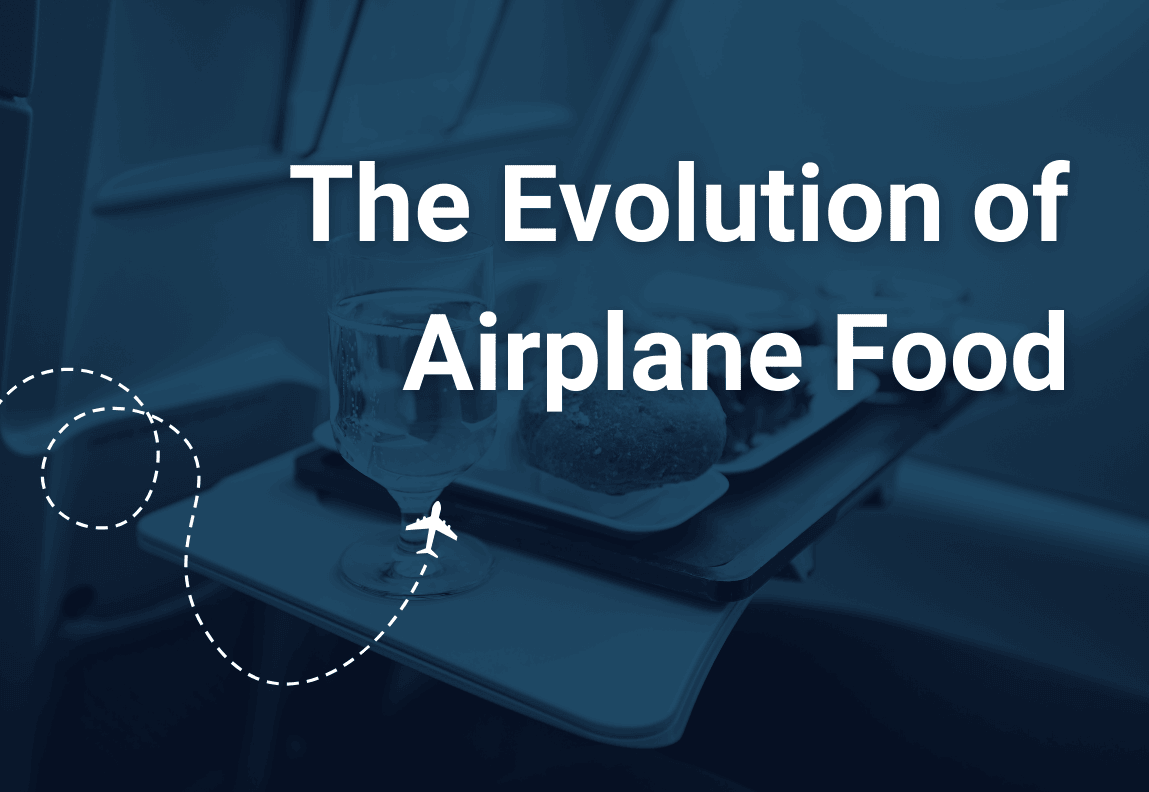
The Evolution of Airplane Food: From Luxury Dining to Packed Snacks
From lobster dinners to snack boxes, airplane food has come a long way! Learn how in-flight dining evolved from luxury meals to modern-day snacks, and what the future holds for food at 30,000 feet.
Airplane food is a mystery, right? Some love it, some don’t, but everyone can agree it’s changed significantly over the years. Imagine getting fresh lobster and steak served on real china mid-flight. It sounds wild, but this was a reality for early air travelers. Today? You’re more likely to get a bag of pretzels. Here’s how in-flight dining has evolved over the decades and where it’s headed.
The Golden Age of In-Flight Dining (1930s-1950s)
Let’s go back to when air travel was the epitome of luxury, reserved for the elite. In the 1930s, airlines like Pan Am served food that could rival five-star restaurants. Passengers got multi-course meals featuring fresh lobster, steak, and even caviar—on real china, with silverware, and often prepared on the plane.
Flight attendants, or “stewardesses” back then, were highly trained in hospitality. The experience was elegant and refined, far from the cramped seating and plastic trays we know today. Dining on a plane was unique, and people dressed up for the occasion. Imagine ordering a martini at 30,000 feet!
The Rise of Commercial Air Travel (1960s-1980s)
As air travel expanded in the 1960s, it was no longer an exclusive club for the wealthy. Flying was still glamorous, but airlines had to manage many more people, which meant rethinking how food was served. This shift led to frozen meals and large-scale catering—the beginnings of the in-flight food we’re familiar with now.
But airlines still wanted to impress. Dishes like shrimp cocktails, baked Alaska, and the ever-present coffee became in-flight staples. Competition was fierce, with some airlines collaborating with chefs to create signature dishes. First-class and business-class meals remained high quality, with the economy getting simpler—though still impressive compared to today’s standards.
The Economy Shift (1990s-2000s)
In the 1990s, as fuel prices spiked and airlines faced pressure to cut costs, the “boxed meal” era began. This was when pre-packaged trays took over, and that big, hot meal on every flight slowly disappeared. Instead, economy class passengers started getting trays with sandwiches, salads, or simple snacks requiring minimal effort.
It wasn’t the end of in-flight dining excitement, though. Some airlines got experimental, trying out health-focused options like low-fat meals and dehydrated foods—though some experiments didn’t go over too well. Airlines also introduced “buy-on-board” options to purchase snacks beyond the primary offerings. Mixed reactions aside, it’s a system that stuck around.
The New Age of Airline Food (2010s-Present)
Today’s in-flight dining is all about options. Airlines are more conscious of dietary needs, offering everything from plant-based to gluten-free meals. Some even partner with local chefs to create fresh, regionally inspired menus. While economy still means snacks and basic meals, business and first class are where the culinary experience is back in full force. You’ve got everything from chef-curated menus to wine pairings and gourmet chocolates.
Technology has also given in-flight meals a boost. Induction ovens and clever packaging now keep meals fresher for longer flights. And if you’re in first or business class, you’ll still enjoy real glassware, ceramic plates, and linens.
Economy Class Today: Specialty Snacks & Limited Menus
For economy, airlines keep things convenient and cost-effective. Snack boxes are a staple, and most low-cost carriers charge for meals, offering options from essential snacks to complete meals. You’ll also see healthier choices in the mix—more salads, fresh fruit, and gluten-free options.
The multi-course meal might be gone in economy, but airlines are stepping up to make in-flight dining more pleasant, especially on longer flights.
The Future of Airplane Food: What’s Next?
Looking forward, there’s a big push for sustainability. More airlines are testing biodegradable packaging, reducing single-use plastic, and introducing local ingredients. Some airlines are trying out “pre-order” meals to reduce food waste. Passengers choose their meals in advance, and only what’s needed is loaded on the plane.
And it doesn’t end there—there’s talk of using hydroponic-grown produce and even lab-grown meat for in-flight meals. Zero-waste catering models are being explored, where meals are customized based on route and class, aiming for as little leftover food as possible.
Conclusion
Airplane food has come a long way, from gourmet dining to snack boxes and back to higher-quality options in premium seats. The history of airplane food reflects the broader changes in travel, with a constant balancing act between cost, convenience, and keeping passengers happy. Now, while we can’t help you get compensation for the disastrous in-flight meal, we can still help you get compensated for the disruption of your flight.

Was your flight disrupted?
Submit your claim now and get up to €600 in flight compensation!
Company
Newsletter
© 2025 Langround, All Rights Reserved
